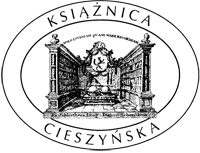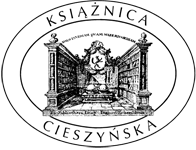The oldest and most valuable book collection which is part of Cieszyn Library is the library of Reverend Leopold Jan Szersznik (1747-1814). He was born in Cieszyn but completed his studies in Bohemia, where he also started his academic work. In 1775, he came back to Cieszyn, where he worked as a pedagogue, scientist, collector and social activist. Inspired by the pedagogical ideas of the Enlightenment, he focused on equipping the secondary school in Cieszyn with appropriate scientific resources, most importantly a modern library. When his attempts to acquire state funds failed, he decided to make his own library available to the public. He started gathering books during his studies in Bohemia and when he returned to Cieszyn, he expanded his library by adding to it book collections created by his father and grandfather. Even though this library was intended mainly for secondary school teachers and students, its founder wanted it to be open for everyone.
The Leopold J. Szersznik’s Library was opened in 1802 and granted the privilege to use the title of “Imperial and Royal”. It was the first public institution of this kind which operated in Austrian Silesia and one of the first on today’s Polish lands. The library has survived to this day thanks to the foresight of its founder. He used almost exclusively his own financial resources to ensure that the library would be stored in appropriate premises and have all the necessary equipment. But most importantly, he also secured the future of the library by establishing a foundation. Throughout the 19th century, the library was visited by subsequent generations of Cieszyn Silesians and contributed to the cultural and civilizational development of the region.
Today, the library consists of about 17,000 volumes and units of printed works (including over 12,000 old prints), 46 incunabula, 5,000 new non-periodical and periodical publications and about 1,000 manuscript units. Most prints date back to the 18th century, but there are also many books from the 17th and 16th centuries. Especially when it comes to works from the 18th and 19th centuries, the collection is dominated by German publications, but there are also works which were published in France, Italy, Switzerland, Bohemia, Poland and England. The linguistic structure of this book collection is similar, but apart from German, it is of course Latin that is the dominating language.
In compliance with its intended use and the standards of the time, the library was universal and contained books on all disciplines, but we can still single out certain thematic groups. Some books on a given topic are simply more numerous and others deserve our attention due to their particular value or the special importance which they had in the eyes of Leopold J. Szersznik. The first group includes religious literature which makes up about 20% of the collection. When it comes to secular literature, it is dominated by the broadly defined humanities, mostly pedagogical literature and historical works, including those devoted to Slavdom and Silesia, which was definitely related to the interests and profession of the founder. His preferences are also reflected by an extensive bibliographic section, which contains literature related to book studies that can be useful in collecting rare and valuable works. Leopold J. Szersznik, who was an enthusiastic and experienced bibliophile, paid particular attention to gathering rare books.
It is impossible to list here all rarae aves collected by Leopold J. Szersznik. However, it is worth mentioning that hand-written codices include: Libri Decretorum dating back to the 13th century; the so-called Cieszyn Prophets, a Hussite translation of Prophetic Books and the New Testament from the years 1419-1439 (it is one of the most important monuments of the Old Czech language); a 15th century miniature prayer book on velum, decorated with five high quality illuminations (the legend has it that it belonged to Elizabeth Lucretia, the last duchess of Cieszyn from the Piast dynasty); Virgin Mary Gradual from the turn of the 16th century, containing e.g. sheet music for “Bogurodzica”, and De Architectura libri Decem by Vitruvius, which dates back to the 15th-16th century. When it comes to prints, the following works are worthy of special mention: Etymologiae by Isidore of Seville (Augsburg 1472), Quaestiones de duodecim Quodlibet by Thomas Aquinas (Nuremberg 1474), German language edition of Gesta Romanorum (Augsburg 1489), Lexicon Graeco-Latinum by Johannes Crastonis (Venice, A. Manutius, 1497), De genealogia deorum by Giovanni Boccaccio (Venice 1511), Vier Bücher der Ritterschaft by Vegetius (Augsburg 1534), Historia animalium by Conrad Gessner (Zurich 1551), numerous 16th century editions of famous works by Erasmus of Rotterdam, Philip Melanchthon and Martin Luther, as well as: Geographica by Strabo (Basel 1539), Geographia universalis by Ptolemy (Basel 1542), Germania Antiqua by Philipp Clüver (Leiden, L. Elsevier, 1616), or Novus Atlas by Willem and Joan Blaeu. It is also worth paying attention to the polonica. Even though they are not numerous, there are some truly unique items. They include one of the two recorded copies of Krótkie opisanie wiary świętey [A Short Description of the Holy Faith] by Heinrich Bullinger (translated and edited by Maciej Wirzbięta) and one of the rarest Polish first editions from Cieszyn, namely Modlitwy z wloskiego przetlumaczone na jenzyk niemiecky a z niemieckiego na ten, ktory jest w Xionżenstwie Tiessynskim zwyczajny [Prayers Translated from Italian into German and from German into the Language Commonly Used in the Duchy of Cieszyn] (Brno 1788). Leopold J. Szersznik’s Library is also very interesting when it comes to the provenance of its resources. We can find here books with ex libris or signatures of: Sigismund II Augustus, King of Poland; abbot Jan Ponętowski; Stanislav Pavlovský, Bishop of Olomouc; John, bishop of Oradea; Andrzej Gryfius; Isaac Casaubon; Joseph Smith, a British consul in Venice; Georg Lambek, Vicar General of Hungary; Vaclav Petr Dobřenski from Dobřenice; the houses of Sternberg, Gonzaga and Lažanski.
However, it is not only individual works which testify to the value of the collection created by L. J. Szersznik. Equally important is the fact that this collection is a classic example of a library from the 18th century, which is currently very rare. It is organized in accordance with the old division into sections and has its unique interior design. It is made up of a few dozen impressive oak book stands in the classical style.




